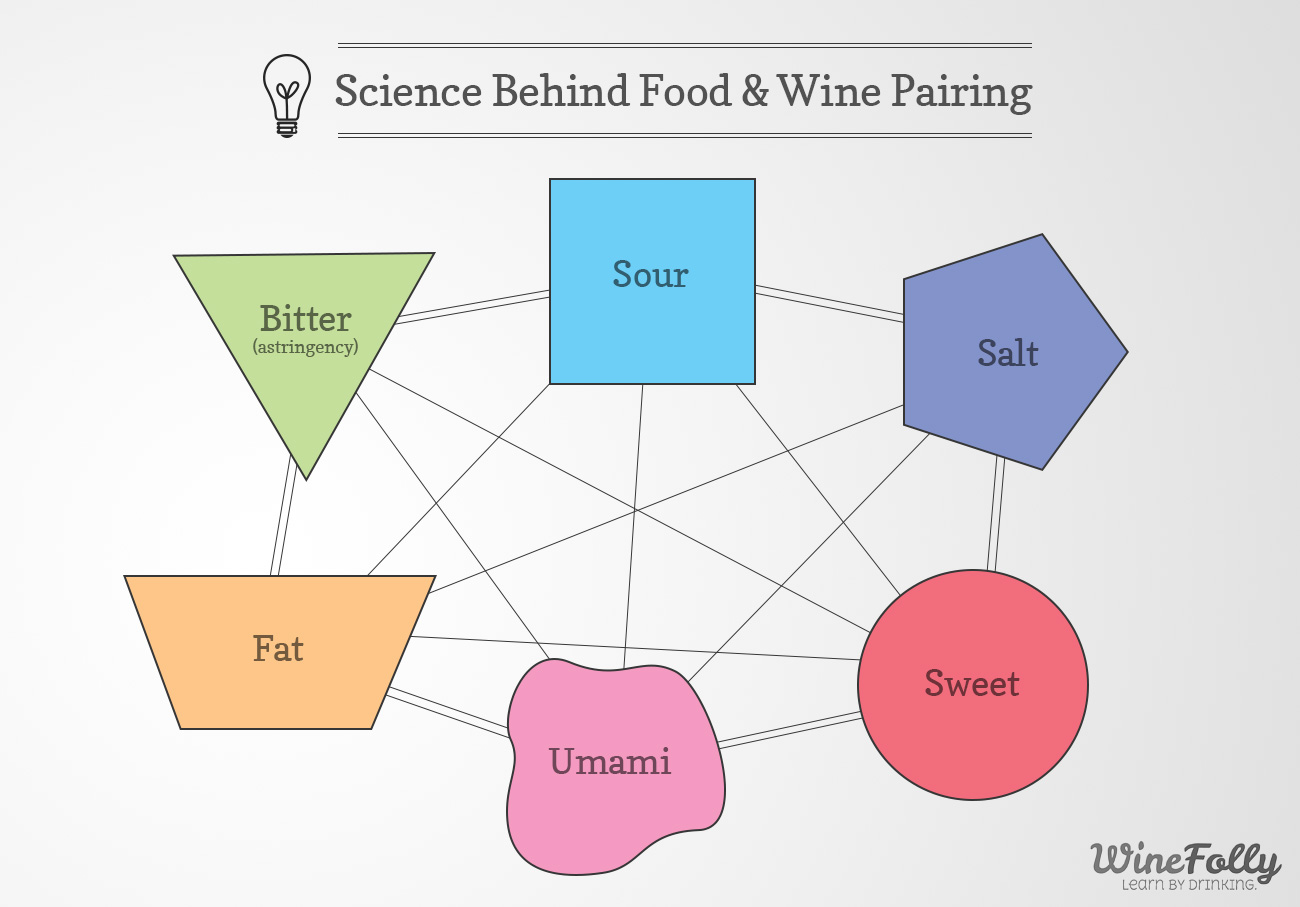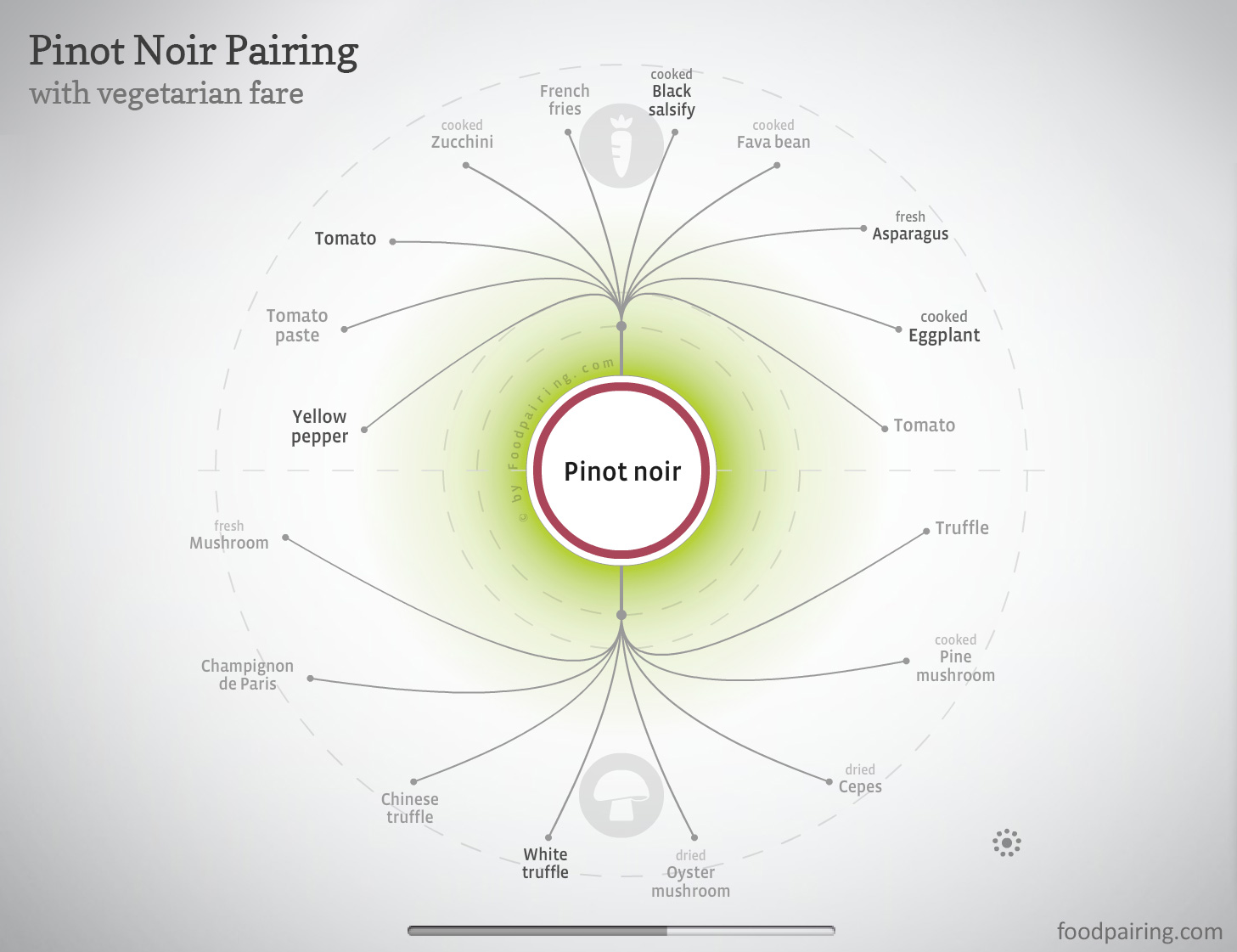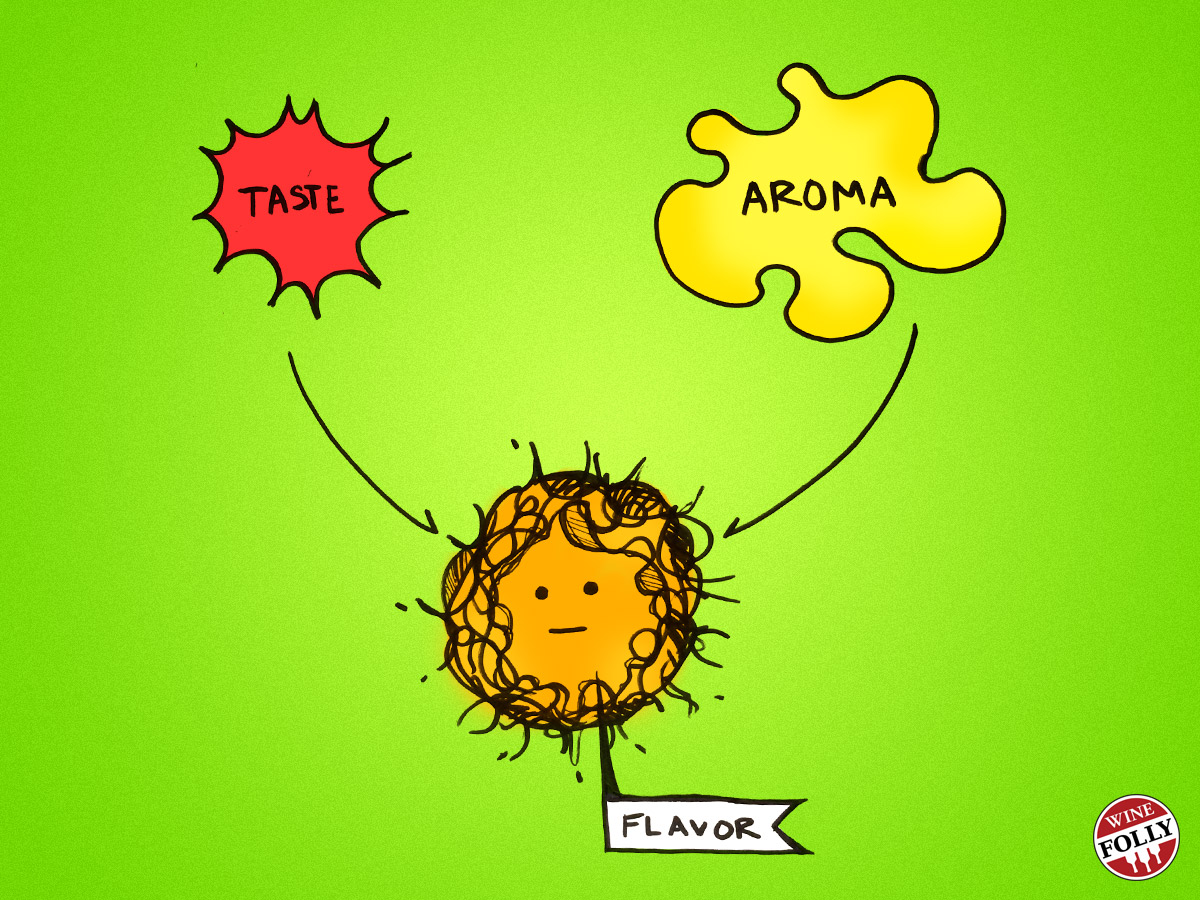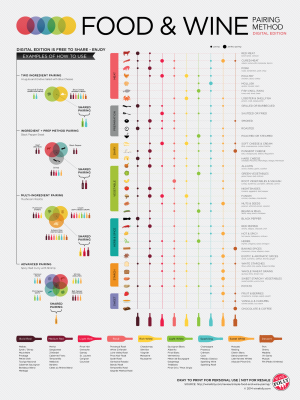Why do french fries taste amazing with a bottle of Cristal?
Believe it or not, there’s science behind the answer. In the last decade we’ve learned more human taste than ever before with notable advances in the study of biochemistry and machine learning. One important thing to note is the dominant role our sense of smell plays with tasting flavors.
The methods for creating flavor pairings are used by star chefs, food technologists, sommeliers, and even parfumiers (someone who designs perfume).
Food Pairing Chart
This chart shows shared pairings across different foods. Image from Flavor network and the principles of food pairing.
Different types of foods share identical flavor compounds. In the image above a thicker line indicates more shared compounds. This data was put together by Foodpairing.com and has been used to invent novel flavor pairings.
What does pork liver and jasmine have in common?
Jasmine flowers and pork liver share a compound called indole. This surprising pairing was matched at 3-Michelin-star rated restaurant, The Fat Duck in the UK.
Difference Between Flavor and Taste
- Flavor
- A combination of compounds and aromas from natural ingredients such as raspberry, vanilla, basil, etc.
- Taste
- Any of our sensed characteristics including sweet, salty, bitter, sour, umami, and fat.
How to Pair by Flavor
All foods contain flavor compounds. For example, the aroma of banana and pear is a compound called isoamyl acetate. Flavor pairing is simply matching foods together that have the same flavor compounds. Want to know what foods match together? Over the last 5 years the website foodpairing.com has been steadily identifying the compounds in over 1000 different vegetables, prepared meats, spices, juices, flowers, etc. into their pairing database.
How to Pair by Taste
Our senses are not limited to flavors, we can also sense taste; a less-defined sensation that involves the texture of different molecules on our palates. Taste pairing balances the 6 tastes (salt, sweet, acid, fat, bitter, and umami) with one another.
Famous American winemaker Robert Mondavi is known for saying “A meal without wine is like a day without sunshine.” Today there may actually be science to back his statement up.
A diagram from foodpairing.com showing flavor affinities of Pinot Noir.
A recent study conducted by Dr. Paul Breslin, a sensory biologist at Rutgers University, tested how taste components like fat, acid, and astringency affect our mouths. He learned that our mouths like to maintain a careful balance.
Beverages with astringency (such as black tea, beer, and red wine) do a better job countering greasy food than plain water. While this principle is a fundamental of gastronomy, no one really knew why.

When you match ingredients with shared compounds and complementary tastes (e.g. sweet and sour) you can create your own great pairings.
Example: Rootbeer Float
An ice cream float is the perfect food pairing because it connects flavor with taste. It’s a balanced taste pairing as the creamy, oily ice cream is cut through by the acidity and astringency of root beer.
It is also an elegant flavor pairing as the compound vanillin found in ice cream compliments safrole; a flavor compound found in the sassafras root used to make root beer.
Wine & Food Pairing Tips
You may be a red wine only drinker. However, next time you pick wine at a restaurant challenge yourself to make a better food and wine pairing.
Food and Wine Pairing Chart
Get your own food and wine pairing chart to have this information handy when you need it most.
Helpful Tips
Know your entree before ordering wine.
Take note of the major components of your entree. For instance, are you having rich braised meat? Or are you planning on eating a tofu rice-noodle salad? If choosing the wine doesn’t make sense, try imagining soft drinks instead. Will the entree be better with Coke or Squirt? If it’s Coke friendly then it will most likely work well with red wine too.
Think about the sauces and seasoning.
Finding spice affinities in both your wine and food will help them pair better together. For instance, Zinfandel often will have notes of cinnamon and clove making it perfect with 5-spice powder-driven Asian dishes. Need another example? Black pepper is often sprinkled on steak and mushrooms. Black pepper is a flavor component often found in Cabernet Sauvignon, Cabernet Franc and Syrah.
Sweet flavors and wine.
If you’re getting a dish that has a lot of sweet components such as orange chicken, don’t be afraid to get a sweeter wine. Lambrusco, Moscato and Riesling are blissful choices with dishes like curry, sweet and sour, and teriyaki.
Keep in mind the color of wine rule.
A basic rule of thumb is to match the color of wine with the meat. White meat? White wine. Red meat? Red wine! If you really want red wine even though you’re going to have halibut, then try to find a wine that mimics white wine characteristics. For this example you’d want to pick a lighter red wine with higher acidity and herbaceous characteristics. This way the red wine could cut through the fatty fish flavors while having lower tannins, just like a white wine would.

A diagram from foodpairing.com showing close up of Pinot Noir with different vegetables.
Chemical compound analysis of foods.
Check out foodpairing.com
Article about Paul Breslin in NYT: The Chemistry Behind Great Food Pairings
Paul Breslin Study for sources: Peyrot des Gachons, C.P.; Mura, E.; Speziale, C.; Favreau, C.J.; Dubreuil, G.F.; Breslin, P.A.S (2012) Opponency of astringent and fat sensations. Current Biology, 22, R829-830.




